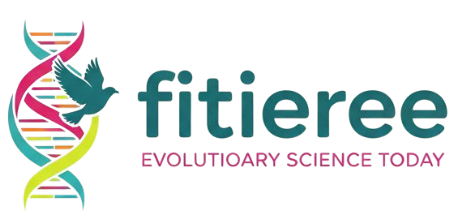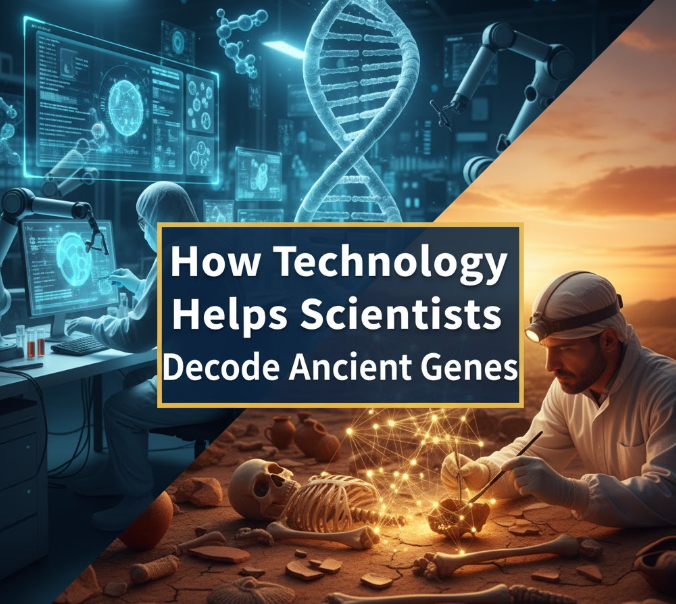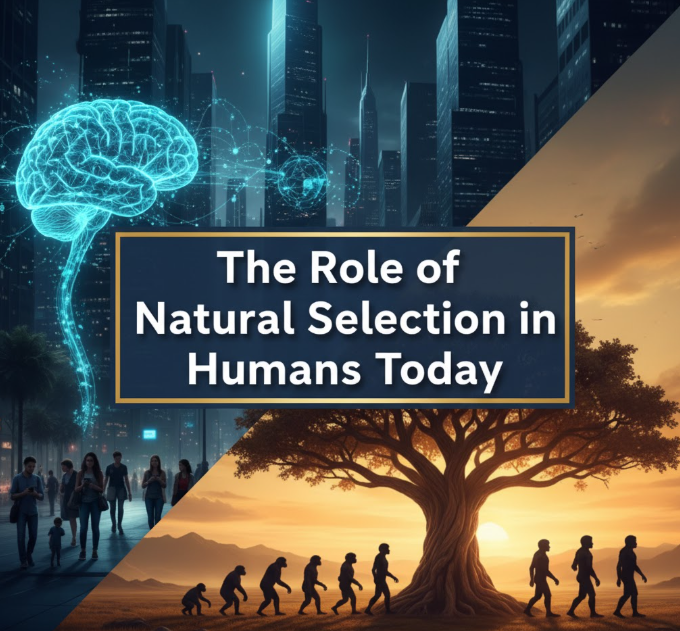Now, picture yourself the possessor of a small sliver of bone from an animal that lived 50,000 years ago. Contained within that bone, hidden like a coded message, is DNA — the instruction manual for life. For years, researchers had dreamed of deciphering those ancient genetic codes, but the technology just wasn’t there. Today, that dream is a reality. Today’s advanced machines and savvy methods make it possible for researchers to extract genetic information from the bones, teeth and even dirt that is thousands of years old. The discovery is rewriting everything we thought we knew about human history, extinct animals and the story of life on Earth.
The leap from ancient dust to decoded DNA sequences is truly miraculous. But it is a blend of state-of-the-art computer power, laboratory precision and detective work worthy of Sherlock Holmes. Now scientists can answer what once seemed like impossible questions: What did Neanderthals actually look like? Why did woolly mammoths become extinct? So how did primitive humans survive so many deadly diseases? The solutions lie hidden in ancient genes, and we’re using technology to uncover them.
Why Ancient DNA Is So Hard to Read
Before we discuss our technology, let’s consider the problem. Ancient DNA is not like the fresh DNA scientists pull from a cheek swab or blood sample. When a living plant or animal perishes, its DNA begins breaking down virtually from the moment of death. Imagine DNA as a long ladder consisting of millions of rungs. With each passing moment, this ladder becomes chopped into smaller and smaller pieces. Thousands of years on, rather than a fully assembled ladder, you’re left with minuscule fragments — it’s like trying to read a book that’s been shredded into confetti.
But that’s not the only problem. Ancient DNA gets contaminated easily. Bacteria, fungus and contemporary DNA from people who came into contact with the sample can all get mixed in too. It’s like trying to read any one particular letter in a dictionary where somebody has interspersed random pages from 50 other books. That’s what scientists confront if they want to study ancient genes.
The environment also matters tremendously. DNA does not last well in heat, moisture or light. A mammoth preserved in Siberian ice for 20,000 years may have reasonable DNA however. A dinosaur bone, 65 million years old? Forget it — the DNA is utterly lost. By common consent among scientists, DNA does not survive more than one million years — and even that’s pushing it.
The Game-Changing Technologies
Next-Generation Sequencing Machines
The most revolutionary advance came with a type of machine known as next-generation sequencers. These devices can read millions of DNA fragments simultaneously, an excellent approach for ancient samples whose DNA is already fragmented.
DNA sequencing technology from the 1990s, for example, could read just one DNA fragment at a time. It was slow and costly and took reams of DNA, which ancient samples just don’t have. Modern sequencers work differently. They can pull all those tiny DNA pieces, read them at once and use computer programs to try to figure out how they fit together, a bit like trying to piece together a jigsaw puzzle with millions of pieces.
Companies such as Illumina have developed machines that can sequence a whole human genome in under 24 hours for about $1,000. Nearly two decades ago, the equivalent job took years and cost $100 million. This precipitous fall in cost and time now means that scientists can study ancient DNA from hundreds or even thousands of samples rather than just a few.
PCR Amplification: More for Less
One of the most basic but also most critical technologies is known as polymerase chain reaction, or PCR. This method is like a molecular photocopier. With just a microscopic speck of DNA — even a single strand of it — PCR can produce billions of copies.
Here’s how the process works: Scientists mix certain “reagents” into the DNA sample and then heat up and cool down the mixture over and over. And each time they cycle through this process, the quantity of DNA doubles. After 30 cycles, you’ve got over 1 billion copies from a single original. This is especially useful for ancient samples in which very little DNA can be obtained.
However, PCR has a catch. It can also amplify contaminants of DNA, which is why scientists have to be extremely careful about keeping their samples clean.
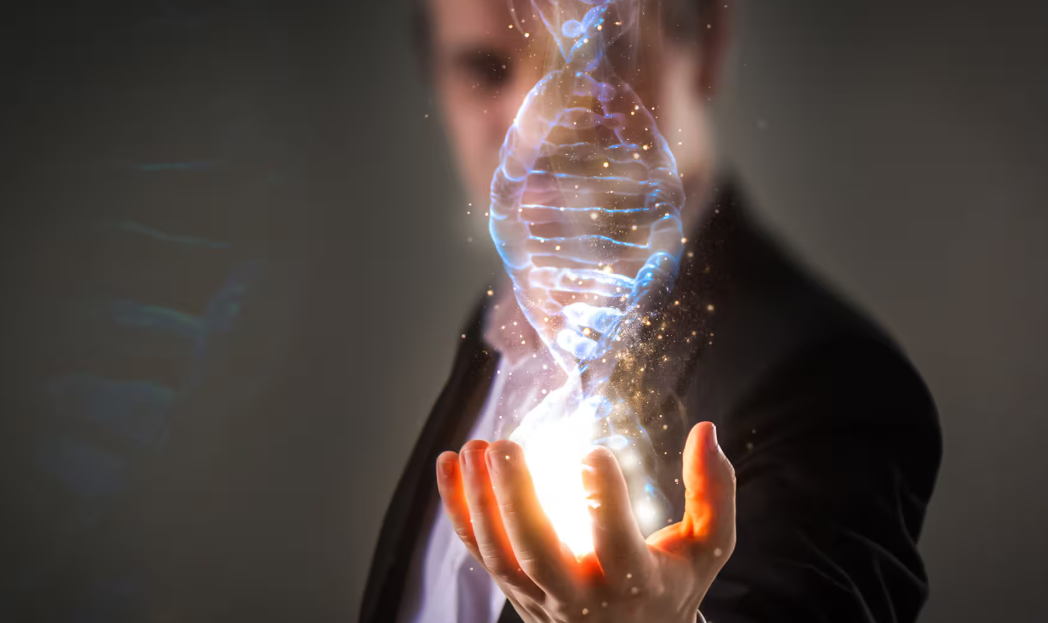
Computers That Connect the Dots
It is one thing to be able to read ancient fragments of DNA; it is another to tease out what they mean. Powerful computer algorithms come here into play. These programs compare the ancient DNA sequences to databases with DNA from modern animals and humans.
The computer hunts for matching or overlapping pieces, slowly assembling them one by one to form an image of what the complete ancient genome would have looked like. It’s as if you had software that could stare and stare at thousands and thousands of pieces of the puzzle, figure all of them out, even when some of the pieces are bent, or partially missing.
And the latest machine learning and artificial intelligence technology are making these programs even smarter. Now they can tell with greater confidence what’s real ancient DNA, and what is contamination instead, and guess more confidently at missing pieces by reasoning from the DNA of close relatives.
Pulling DNA Without Destroying Fossils
Previously, museum curators would wince when geneticists requested samples. Prior methods required grinding up or drilling into bone and tooth — destroying irreplaceable fossils forever. This has changed drastically with new technology.
Non-Destructive Sampling Methods
Nowadays, scientists have techniques that require much smaller samples. At other times, from just a scant scraping of powder from the surface of a bone they are able to extract DNA. In some cases, they don’t even need the fossil — DNA can be obtained from sediment near where ancient creatures lived.
Scientists in caves in Europe have managed to get human and animal DNA from dirt on cave floors. These samples of sediment contain small pieces of skin, hair and other biological material that were left behind by ancient creatures. It’s akin to reading the genetic history of a place without requiring any bones whatsoever.
The Clean Room Revolution
For contamination control, scientists now labor in special clean rooms that could easily pass for props in a science fiction film. They all are in full-body suits, masks and layers of gloves. The air is constantly filtered, and rooms are maintained at a positive pressure so that outside air doesn’t seep in.
These labs also kill any contaminating DNA with UV light before the samples arrive. Much of the equipment is sterilized, and scientists are known to test themselves so that they don’t include their own DNA in the samples that they study.
What Ancient Genes Have Revealed
There’s more than just impressive technology here — there have been breathtaking discoveries that are rewriting history of humanity.
The Neanderthal Inside Us
One of the most surprising ones fell out when scientists sequenced the Neanderthal genome. They found that nearly everyone alive today has some Neanderthal DNA. If you have ancestors from outside of Africa, about 2 percent of your genome derived from Neanderthals.
This showed that ancient humans didn’t just meet Neanderthals — they had children with them. Some of those children survived and passed on Neanderthal genes that survive in people to this day. Some of those genes influence our immune systems, our skin color and our risk for certain diseases.
The Denisovans: Discovered Through DNA
Even more startling, scientists identified a previously unknown type of ancient human purely through its DNA. In a cave in Siberia, scientists found a small finger bone. The DNA was human-like, however it differed from that of both modern humans and Neanderthals. They named this new group Denisovans.
And here’s the wild thing: We know that Denisovans were really a thing, we know what their genes looked like — and we know that some people living today (especially in Southeast Asia and Oceania) carry actual Denisovan DNA. Yet we still have only a few scraps of actual Denisovan fossils. They were found by their genes before anyone saw their bones.
Bringing Back Extinct Animals?
Now, scientists have sequenced the genomes of woolly mammoths and saber-toothed cats — and even those of horses in Asia that lived more than 700,000 years ago. This raises a fun question: could we de-extinct them?
Some scientists are already on the case. In a controversial experiment, they have set out to edit the DNA of elephants with a tool that could allow them to add mammoth genes so their bodies can produce “mammoth hemoglobin,” which the researchers speculate will help them survive in arctic temperatures. We’re not there yet, but the technology is available to try that right now.
The Technology Timeline
| Year | Technology/Discovery | Impact |
|---|---|---|
| 1984 | First ancient DNA extraction | Demonstrated preservation of ancient DNA |
| 1993 | Perfecting PCR for ancient samples | Enabled amplification of small amounts of DNA |
| 2005 | Invention of next generation sequencing | Allowed large-scale studies of ancient DNA to be conducted |
| 2010 | Publication of first Neanderthal genome | Showed human interbreeding with Neanderthals |
| 2012 | Sequencing the Denisovan genome | Discovered new types of humans |
| 2013 | Sequencing horse DNA from 700 thousand years ago | Established record for oldest DNA sequenced |
| Recent years | CRISPR gene editing achieved | Made de-extinction concept feasible |
| Recent years | Extracting and analyzing DNA preserved in dirt | Eliminated a need for actual fossils in some instances |
How Scientists Read Ancient Genes, Step by Step
The real process scientists follow when they get their hands on an ancient sample, though?
Step 1: Sample Preparation and Selection
Scientists are judicious about which fossils to sample. They seek out well-preserved bones or teeth kept in good storage. A dense bone in the skull called the petrous bone and teeth are favorites because they tend to preserve DNA better than other bones.
Upon return to the clean room, they then cleaned the sample exterior to remove surface contamination. Occasionally the facility workers will just cut away the outer layer entirely. Then they grind a tiny bit to powder.
Step 2: DNA Extraction
The powder is combined with special chemicals that crack open old cells and release whatever DNA is left inside. The result is a solution that theoretically contains long lost fragments of ancient DNA floating around in the liquid.
The scientists then filter out the DNA and chemically remove it from all of everything else — minerals, proteins, other cellular detritus. What you have is your strong solution of DNA fragments.
Step 3: Library Preparation
This is where it becomes technical. Researchers link specially designed molecular “adapters” to each DNA fragment. The adapters are like name tags to help the sequencing machine grab and read each piece of DNA. Such a collection of tagged genomic fragments is known as a library.
Step 4: Sequencing
The library is loaded onto the next-generation sequencing machine. Millions of DNA fragments get read at once inside. For each of the four chemical letters that make up DNA (A, T, G and C), the machine notes its identity. Then, after a few hours or days, the machine spits out data files with billions of these letters.
Step 5: Bioinformatics Analysis
Now the computers take over. Powerful programs match the ancient DNA sequences against reference genomes from modern and other ancient species. The software determines what species a sample came from, eliminates contamination and stitches the fragments into longer sequences.
Depending on the quality of the sample and how complex the questions scientists are asking, this step can take weeks — or months.
Step 6: Interpretation
Finally, scientists examine the results and decipher what they signify. They could compare the ancient genome with modern genomes to understand how species evolved. They may search for particular genes that affect appearance, behavior or resistance to disease. They may estimate when distinct populations separated or rejoined.
Challenges That Still Remain
Yet for all of this amazing progress, scientists continue to encounter serious hurdles.
The Age Limit
DNA doesn’t last forever. Even under ideal circumstances, DNA degrades with time. The general consensus among experts is that once you go beyond about a million years, DNA becomes too degraded to salvage. Which means we will never be able to sequence dinosaur DNA, no matter what “Jurassic Park” might have you believe.
Ethical Questions
As the technology becomes more advanced, the ethics become more urgent. Is it ethical for us to sequence ancient human DNA without the consent of descendants? Is it ethical to possibly resurrect extinct animals? Who owns ancient DNA and what can be done with it?
Some indigenous communities have expressed concerns about scientists harvesting and analyzing DNA from the remains of their ancestors. They say this contradicts their culture and should not be done without their consent.
Cost and Access
Sequencing ancient genomes, even as the price has plummeted, is expensive. The equipment and expertise can be beyond the means of many museums or research institutions. That means most ancient DNA work takes place in — and for the benefit of — rich countries, even though significant fossils exist throughout the world.
Ancient DNA Things to Come
The field is moving so quickly that what sounds impossible today could be the norm a decade from now.
Portable DNA Sequencers
Companies are racing to create DNA sequencers that are small enough to carry in a backpack. Picture paleontologists out in the field with the capacity to test whether a fossil contains DNA and then make an on-the-spot decision about whether to respectfully extract it. This innovation holds the potential to transform how fieldwork is conducted.
Better Computer Models
Artificial intelligence is improving at creating DNA sequences for biotechnology. Future AI may be able to reliably predict missing sections of ancient genomes, pushing our extent even further into the past.
Ancient Proteins and Epigenetics
They are also developing technology to study ancient proteins, which can live on much longer than DNA — sometimes millions of years longer. Although proteins don’t store as much information as DNA does, they can tell us about ancient life.
Scientists are also starting to look at epigenetics from ancient samples — chemical changes to DNA that cause genes either to be switched on or off. That might provide a clue about the lives of long-lost creatures that DNA alone cannot illuminate.
Why This Matters for Everyone
You may be asking yourself why you should care about ancient DNA research if you are not a scientist. The answer is that such discoveries change the way we see ourselves and our place in nature.
Ancient DNA studies have shown that human history is far more complicated than we thought. We didn’t just evolve in Africa and get out and spread around the world. Rather, we interbred with members of other human species, quickly adapted to new environments, made it through cataclysmic events that killed off other species.
This also aids in medical uses. By investigating how early humans coped with diseases, scientists can gain insight into our immune systems today. Some of the genes that helped our ancestors fend off infections those generations ago are now the ones that make some susceptible to autoimmune diseases.
And for conservation, ancient DNA helps us to understand how animals have responded to climate change in the past and to human pressures. This understanding could help us save endangered species right now. Learn more about ancient DNA research and conservation efforts.
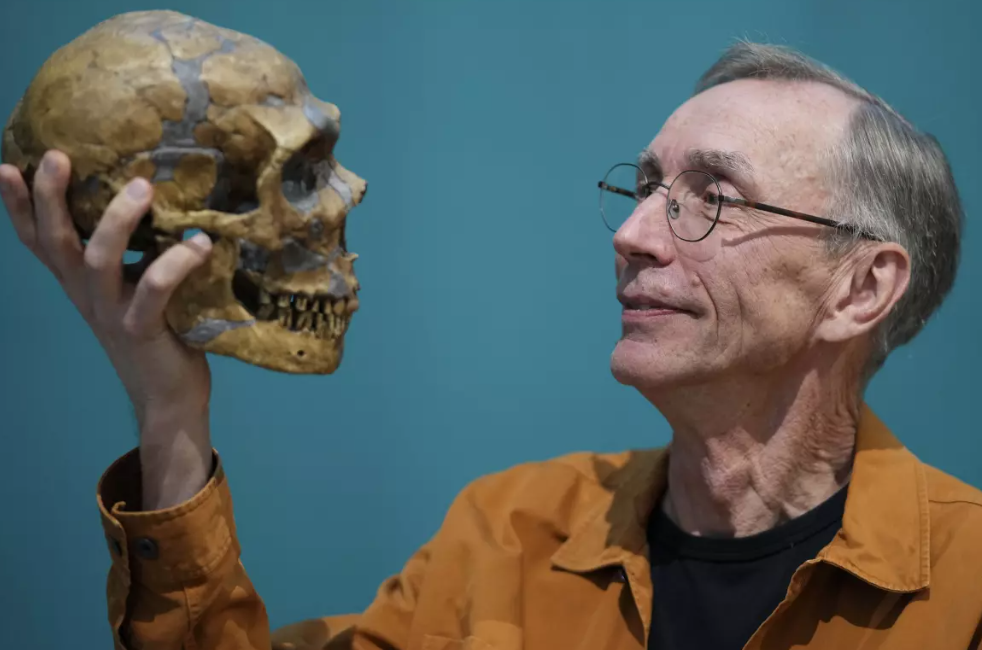
Frequently Asked Questions
What is the oldest DNA that has been sequenced?
The oldest verified DNA is from the teeth of mammoths discovered in permafrost beneath Siberia and dates to about 1.2 million years ago. Still, researchers argue about whether DNA can survive tens of thousands of years beyond this age.
Can scientists actually resurrect an extinct animal using that ancient DNA?
Not exactly. Although scientists are able to read ancient DNA sequences, they aren’t yet able to take that information and “print out” a living mammoth. But they may be able to engage in gene-editing by adding crucial mammoth genes into the DNA of other living relatives, such as elephants, to produce a hybrid animal.
Why is it that we can’t sequence any dinosaur DNA?
Dinosaurs died out 65 million years ago. Even under the best possible preservation conditions, there is an upper limit to how long we can expect DNA to last: about 6.8 million years or so. Any reports of dinosaur DNA are either errors or hoaxes.
How can scientists be sure that ancient DNA is not contamination?
Ancient DNA has distinctive patterns of damage that modern DNA doesn’t. Scientists search for such patterns and even sequence the same sample several times in different labs to verify results.
Can ancient DNA show us what extinct animals would have looked like?
Yes, to some extent. Genes in DNA determine how cells function and are encoded with traits like color, size and physical capabilities. Scientists can use comparisons between ancient DNA and modern relatives to make educated guesses about what the individuals looked like.
Is it ethical to sequence DNA in ancient human remains?
This is debated. Many scientists feel they should consult and get permission from descendant communities before studying ancient human remains. Others say that there is value for all in learning about human history.
What does it cost to sequence an ancient genome?
Costs can also range highly, depending on the quality of sample and level of sequence completeness required. A simple study might be as little as $10,000–$50,000 and an excellent whole genome a few hundreds of thousands.
Can ancient DNA influence modern disease?
Yes. Through examination of how ancient humans’ immune systems functioned, scientists can infer about resistance to disease. There are some old genes that served to protect us against infections which persist in people today.
The Road Ahead
New technologies have made ancient DNA a reality rather than a fantasy, and powerful scientific tool. What had previously been a process that took years and millions of dollars could soon take weeks and cost thousands. Researchers went from laboring to sequence a few hundred DNA letters at the time to simply reading off billions of As, C’s, G’s and T’s.
We’re in a golden age of ancient DNA. Each year, new discoveries force us to reconsider the past. We have learned that Neanderthals were our kin, not our supplanters. We have found human species we never knew were there. We’ve watched evolution occur in real-time by comparing the genomes of ancient and modern organisms.
The surprises won’t stop coming over the next ten years. With advances in technology and even lower costs, thousands more ancient genomes will be sequenced by scientists. We will know how animals and plants reacted to climate changes in the past. We’ll follow the beginnings of agriculture and then domestication. We could even begin to work toward resurrecting extinct species.
DNA is the script that runs the show of life on Earth, and increasingly, technology is allowing us to read it. Ancient genes speak to us over thousands of years, and we are only starting to hear what they have to say. And the secrets they preserve about our past will enable us to meet the challenges of the future.
Each scrap of ancient DNA is a message from the past — one that has waited thousands of years for us to develop the technology to read it. Thanks to smart scientists and some amazing machines, we’re just now starting to open those messages and they are telling us the story of life — a story that turns out to be even more amazing than we ever thought.
